Vintage Treasures: Shadow of Earth by Phyllis Eisenstein
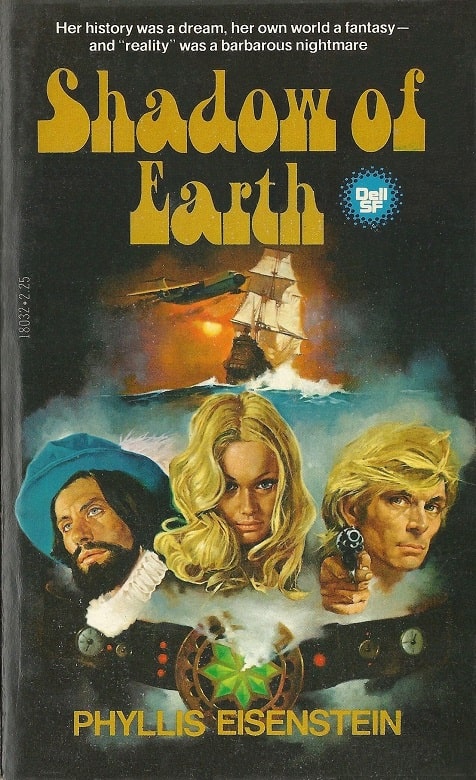 |
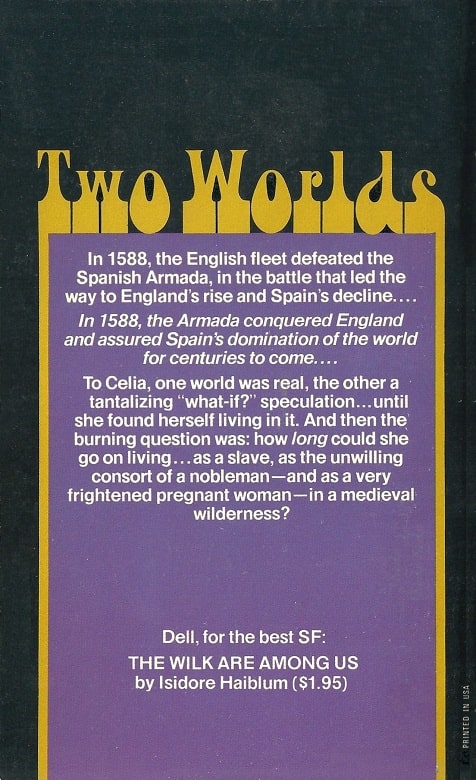 |
Shadow of Earth (Dell, September 1979). Cover artist uncredited
We lost Phyllis Eisenstein almost three years ago, in December 2020. She was a friend of mine, and I miss the long conversations we used to have at Windycon and the Windy City Pulp & Paper Show. I’ll never forget the greeting she shouted at me in 2015 (“I’m retired!”) after she finally quit her advertising job. She had numerous writing projects she wanted to complete. She died of a stroke five years later, at the age of 74.
Phyllis was an enormously respected author who influenced modern fantasy in profound ways (George R.R. Martin dedicated A Storm of Sword to her, in gratitude for her contribution to Game of Thrones), but I always thought her own fiction was unjustly overlooked. Her series Tales of Alaric the Minstrel (ten stories and two novels, Born to Exile and In the Red Lord’s Reach) was her most popular, but her catalog also included the Book of Elementals trilogy and two standalone novels. Today I want to look back at one of her first novels, Shadow of Earth (1979).
[Click the images for shadows of larger versions.]
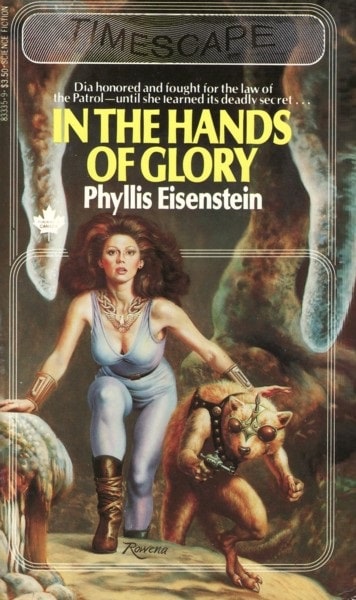 |
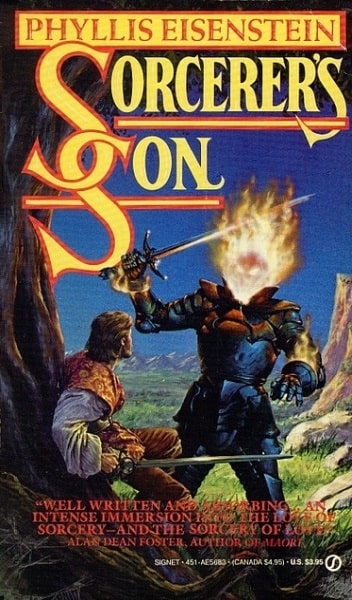 |
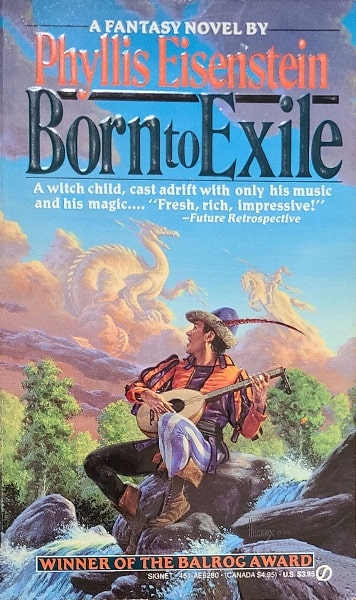 |
Some of Phyllis’s other fantasy novels: In the Hands of Glory (Timescape, 1981),
Sorcerer’s Son (Signet, 1989), and Born to Exile (first book of
Tales of Alaric the Minstrel, Signet, 1989). Covers by Rowena Morrill and Richard Hescox
Phyllis’ work has been nominated for both the Hugo and Nebula Awards, but she’ll probably always be remembered as the person who convinced George R.R. Martin to put dragons in A Song of Ice and Fire. She was a beta reader for the early drafts of A Game of Thrones and A Clash of Kings, and he credited her with helping him solve one of the big problems the series. Here’s George from a 2014 interview in Rolling Stone.
The main question was the dragons: Do I include dragons? I knew I wanted to have the Targaryens have their symbol be the dragons; the Lannisters have the lions, the Starks have the wolves. Should these things be literal here? Should the Targaryens actually have dragons? I was discussing this with a friend, writer Phyllis Eisenstein – I dedicated the third book to her – and she said, “George, it’s a fantasy – you’ve got to put in the dragons.” She convinced me, and it was the right decision. Now that I’m deep into it, I can’t imagine the book without the dragons.
Phyllis’ instincts as an author served her well in her own writing. Here’s James Davis Nicoll’s summary of Shadow of Earth, from his entertaining Tor.com article The World Next Door: 5 SFF Stories That Travel to Alternate Earths.
Spanish tutor Celia Ward has fallen hard for her student Larry Meyers. When she discovers that the older man has an alarming stash of firearms, she does not immediately flee. Instead, she lets Larry spin an enthralling tale about his project to explore alternate Earth, a project for which the arsenal is a necessary element. The story is true. More importantly, confiding in Celia buys the reprehensible Larry enough time to come up with a plan to silence Celia before she blabs to the authorities—a plan that is not only effective, but highly profitable.
In a North America one accident of fate away, the Marquis de los Rubios believes himself to be of an elevated breed. Such a man demands a bride of rare qualities. Such women are difficult to find in the Marquis’ feudal New World. Newly arrived Celia is just the kind of woman he wants. However Celia has no interest in becoming a racist lord’s brood mare. However, the universe into which Larry has enticed her is not one where women’s preferences matter. If Celia cannot somehow escape the Marquis and find her way back home, she faces a life of reproductive slavery.
Shadow of Earth didn’t get a lot of love when it first appeared. It had a single printing, and then vanished forever.
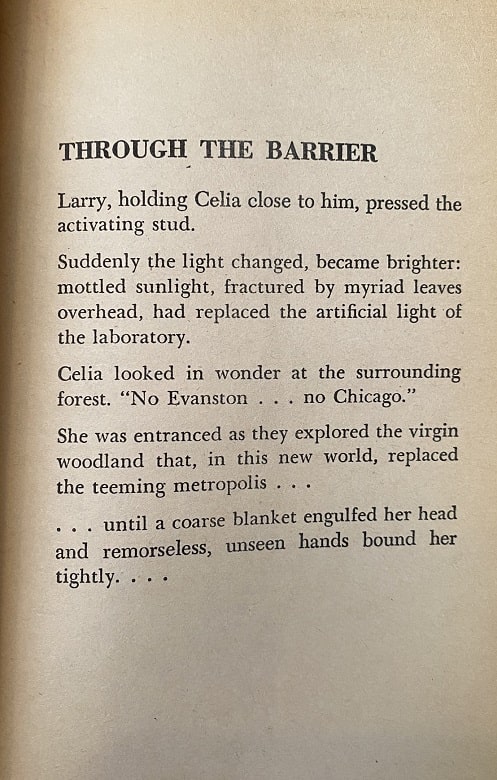 |
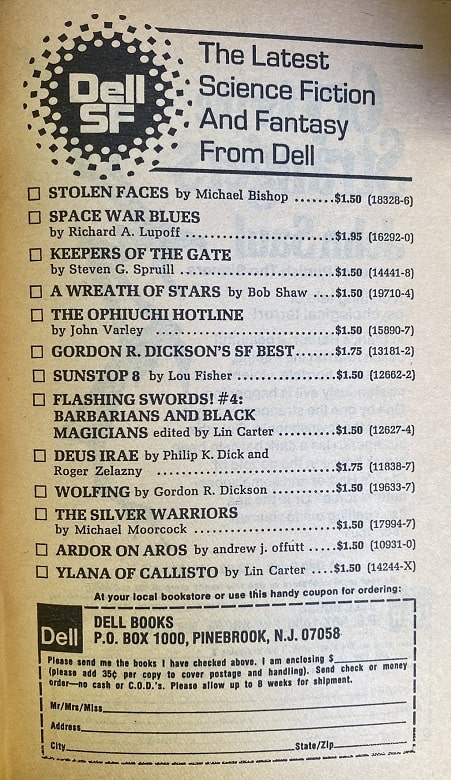 |
Inside cover of Shadow of Earth, and the always delightful Dell catalog in the back
It has seen a minor resurgence of interest in more recent years. Rising Shadow included it in The Best Alternate History Books of the 1970’s. But the best review I’ve seen in the last decade or so is by the always reliable James Davis Nicoll, from his blog.
Shadow of Earth [is] a tale of a modern American woman who finds herself trapped in a backward world where her only value is as a brood mare of rare breed: a full-blooded white woman!… The book starts off happily enough, with 20-year-old Celia Ward in love with older Larry Meyers, a grad student whose mysterious Project drives the book. The parsimonious Larry hired Celia to tutor him in Spanish but they soon became lovers, and as far as Celia knows, happy ones.
Alas for Celia, she is utterly ignorant of the story of Bluebeard and so when she stumbles over Larry’s hidden stash of guns she does not immediately flee. When asked about it, he reluctantly reveals that his Project is a device that gives him access to another version of the Earth, an undeveloped world where modern guns are a valuable trade good.
Larry does give two sensible reasons for keeping his device, created more or less by accident, a secret. The first is the other Earth, still resource rich, would be exploited by our world. The second is he is afraid of how the US would use the shadow world in the context of the Cold War; nuclear weapons could be launched for the shadow world into unsuspecting cities in our world.
Larry does offer to show her the other world, and she is intrigued enough to take up on that offer. This expedition goes well until the moment they appear in the shadow world, at which point she is ambushed, captured and dragged off… Just to give you an idea of how olden timey books paced things, all of the above occurs in the first 28 pages of this 329 page novel…
Celia is an interesting character and I have to give the author points for the success with which she makes Larry utterly loathsome and the way she ties in his exploitation of Celia with how all the other men in this try to use her… There’s also a strong thread in favor of modern conveniences and modern medicine but as recent history shows, access to those goes hand-in-hand with access to a complete suite of civil liberties. It does no good to have the technological ability to control fertility if women are denied access to said technology.
Phyllis left behind two major unpublished works at the time of her death.
1) The City in Stone, the closing volume of the Book of Elementals trilogy, which she finished in 2007 but which was orphaned when publisher Meisha Merlin closed up shop that year.
2) The Walker Between Worlds, the opening novel in a new series The Masks of Power, is complete, and the first eight chapters (38,000 words) were published in 2007 as a chapbook. The complete novel remains unpublished however, and the remaining volumes in the trilogy were incomplete at the time of her death.
Phyllis was much loved, and had many friends and admirers among the small press, and I hope one or more will eventually shepherd these books into print.
Shadow of Earth was published by Dell in September 1979. It is 329 pages, priced at $2.25. The cover art is uncredited. It has never been reprinted, and there is no digital edition.
See all our recent Vintage Treasures here.
I heard there are two completed novels, do you think they will be released?
Hi Robert,
Thanks for the questions! Yes, Phyllis left behind two major unpublished works:
1) The City in Stone, the closing volume of the Book of Elementals trilogy, which she finished in 2007 but which was orphaned when publisher Meisha Merlin closed up shop that year.
2) The Walker Between Worlds, the opening novel in a new series The Masks of Power., is complete, and the first eight chapters (38,000 words) were published in 2007 as a chapbook. The complete novel remains unpublished however, and the trilogy was incomplete at the time of her death.
Yes, I do believe one or more of these works will eventually be published. Phyllis was much loved, and had many friends and admirers among the small press, and I suspect one or more will eventually shepherd them into print.
I’ll update my article above with some of this info.